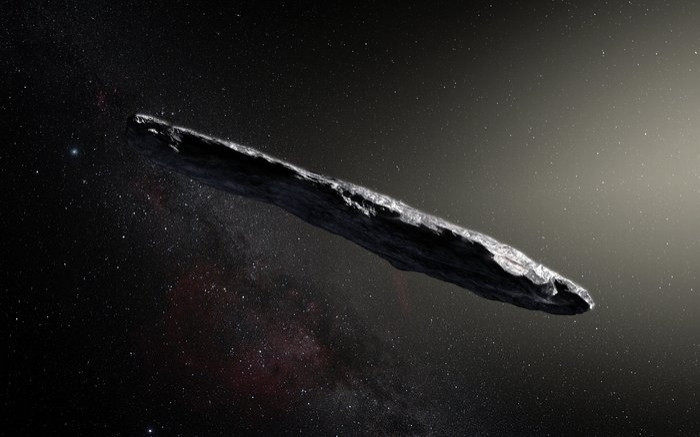Oumuamua: All you need to know about the first interstellar asteroid to enter our Solar System
The asteroid was first spotted in October when scientists believed it to be a comet.
The very first interstellar object ever to enter our Solar System appears to have stumped astronomers, who say they have never seen anything like it before. The asteroid, named Oumuamua (meaning – a messenger from afar arriving first), was first spotted in October when scientists believed it to be a comet. However, observations revealed that it was, in fact, an asteroid from another star system.
Unlike any other asteroid observed, Oumuamua has a "complex, convoluted shape" that rather looks like a bizarre "fat" space cigar. According to European Southern Observatory (ESO) scientists, the alien asteroid has likely been hurtling across space for hundreds of billions of years at over 95,000kms/hr before it finally entered the Solar System.
"For decades we've theorized that such interstellar objects are out there, and now — for the first time — we have direct evidence they exist," Thomas Zurbuchen, associate administrator for Nasa's Science Mission Directorate said in a statement.
"This history-making discovery is opening a new window to study formation of solar systems beyond our own."
"It's a really rare object," Ralf Kotulla, a University of Wisconsin–Madison astronomer, said in a statement. Kotulla, along with his colleagues from UCLA and the National Optical Astronomy Observatory (NOAO), captured some of the first pictures of the interstellar asteroid using the 3.5-meter WIYN Telescope in Arizona.
Here are the top 5 most notable aspects of Oumuamua
- The asteroid has a highly "elongated shape" – around 400m long. ESO's Karen Meech said that the asteroid is "about ten times as long as it is wide, with a complex, convoluted shape." According to scientists, Oumuamua's length spans around "half a city block".
- The alien asteroid is very fast, zooming away from our Solar System at around 140,000 Kms/hr and is already believed to be around 124 million miles away from Earth, Space.com reported.
- The asteroid is dense, possibly rocky and may have a high metal content.
- The asteroid does not have "the faintest hint of dust around it," according to Meech, and lacks ice or water.
- Unlike Solar System comets or asteroids, Oumuamua's orbit is not "bound to the Sun," Kotulla explained. In fact, the asteroid's orbit does not take it anywhere close to the major planets in our Solar System.
"We are continuing to observe this unique object," said ESO's Olivier Hainaut, and added "we hope to more accurately pin down where it came from and where it is going next on its tour of the galaxy. And now that we have found the first interstellar rock, we are getting ready for the next ones!"
The findings from the research on the interstellar asteroid have been published in the journal Nature.























